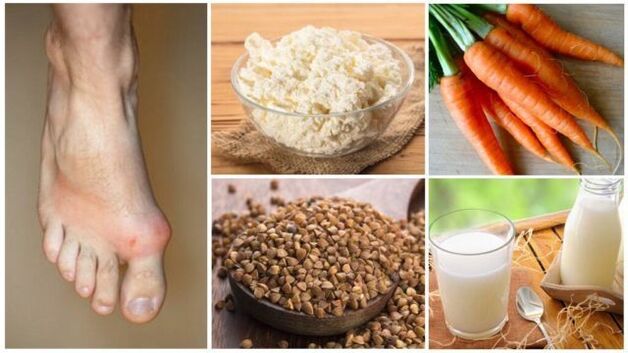
Improper nutrition, combined with reduced nutrient uptake, leads to gout. This disease develops when the uric acid level in the blood exceeds the permissible level (in men over 420 μmol / l, in women - 350 μmol / l). Disruption of metabolic processes leads to the salts of this acid settling on the walls of the intestines, blood vessels, on the joint surface and damaging important organs of human life.
Over time, the disease becomes chronic with frequent recurrences. During the acute period, patients experience excruciating pain at the site where the pathological process is localized. A diet for gout helps to normalize the amount of uric acid and reduce the incidence of relapses.
Why diet for gout?
An important task of treatment is to reduce the nature, the frequency of manifestations of the disease. This can be achieved by reducing the uric acid content in the body.
The development of rheumatic attacks is due to:
- consume large amounts of foods that are high in purines
- metabolic disorders.
Dietary optimization allows you to start the right methods of adaptation and excretion of substances. Treatment measures aimed at eliminating the causes of the development of the disease are closely related to the fact that the restrictions of some food addicts are observed. With the help of a proper composite food menu, you can slow the progression of the disease.
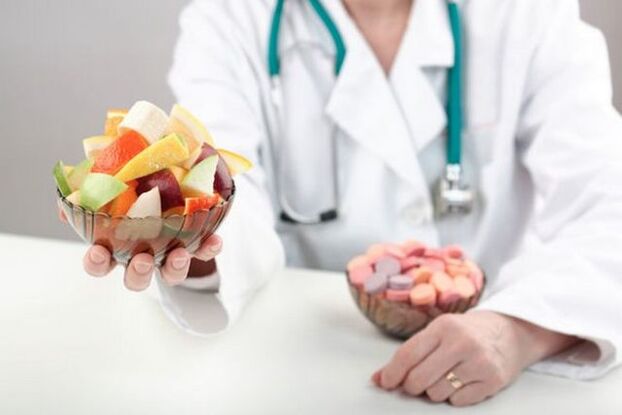
The food that consists of one's daily diet should contain foods that have high levels of nutrients for the benefit of the body.
Nutritional treatment for gout aims to reduce the onset of symptoms by eliminating the supplements that provoke them. The products that one eats every day have an enormous impact on health in general, are responsible for the chemical processes that take place in the human body throughout its life.
What should not be eaten with gout?
Based on the research, researchers have identified a list of products that directly trigger the initial development of the disease and its further development.
The list of what not to eat for gout includes:
- smoked spicy cheese and cheese products;
- cholesterol-rich meats and bone products (pulp of young animals and pigs, hooves, buldyzhki);
- meat and bone fat, ear;
- fish with a high fat content (sardines, sprat);
- pickled vegetables, pickled fruits (cabbage, watermelon, cucumbers, apples);
- hot, cold-smoked products;
- legumes (beans, peas, soybeans, lentils);
- vegetables containing oxalic acid (spinach leaves, sorrel, rhubarb root);
- hot spices, sauces;
- some types of vegetable crops (Brussels sprouts and cauliflower, radishes);
- internal organs of animals obtained by slaughtering carcases (kidneys, liver, lungs, heart, brain);
- porridge;
- confectionery products;
- alcohol of any percentage;
- fruits and berries (grapes, raspberries, figs);
- hot, spicy and essential spices (bay leaves, horseradish, chili peppers);
- animal fats and oils (lard, margarine, lard);
- canned meat, fish and vegetables.
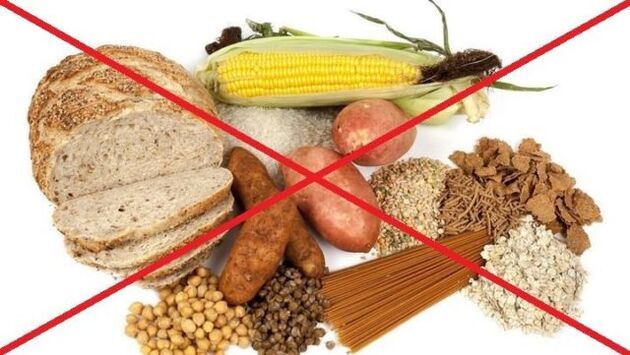
If the diet is not balanced or contains high amounts of fatty, strong or heavy meals for the digestive system, a person's metabolism can be disrupted.
List of products recommended for limited use:
- coffee, strong tea;
- butter;
- plums;
- nightshade vegetables (eggplant, tomatoes, peppers);
- table salt, granulated sugar;
- mushrooms (only on remission).
To alleviate the attack, as well as to maintain remission, it is important to take the above foods from the diet for a long time.
What can you eat with gout?
A list of foods that patients with this disease are advised to use:
- meat products from food (rabbit, poultry, lean beef);
- slim white fish (palm, palm, cod, pollock);
- bran and rye bread;
- chicken eggs (without egg yolk);
- cereals (rice, wheat, buckwheat, millet, pearl barley);
- fresh vegetables (beets, carrots, cucumbers, cabbage, potatoes);
- seasonal fruits, berries (watermelon, melon, apricots, strawberries, peaches, cherries, blackberries, green apples);
- pasta;
- kernels of nuts (hazelnuts, walnuts, cedars);
- herbal teas and decoctions (Dubrovnik, basil, catnip);
- fermented dairy products, cottage cheese;
- freshly squeezed juices, fruit drinks, compost;
- boiled tomatoes;
- spices (turmeric, fennel, basil);
- vegetable oil (olive oil, rapeseed).
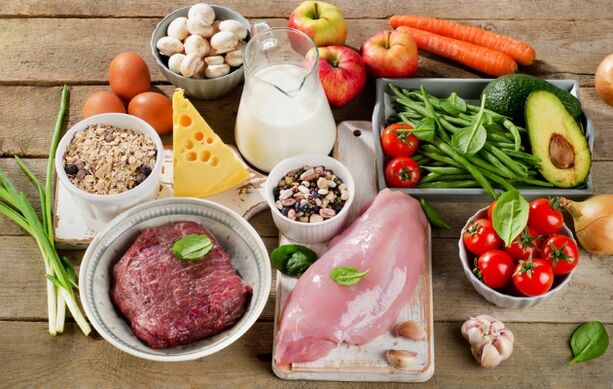
Nutritional treatment for gout will help the patient get rid of uncomfortable and painful symptoms at home quickly.
In limited quantities, natural honey is useful for gout. This product is suitable as a diabetic.
Honey has many positive properties:
- immunostimulants;
- antioxidants;
- improve metabolic processes;
- bactericidal.
During the acute season, you should not abuse this bee product. Patients with this disease need to eat foods rich in vitamins, trace elements, amino acids. A useful supplement is medicinal fish oil for gout.
General dietary rules
Eliminating certain forbidden foods from your regular menu does not guarantee immediate relief. In addition, the list of products varies according to the stage and severity of the disease course. So nutrition for gout during exacerbation involves stricter restrictions than remission.
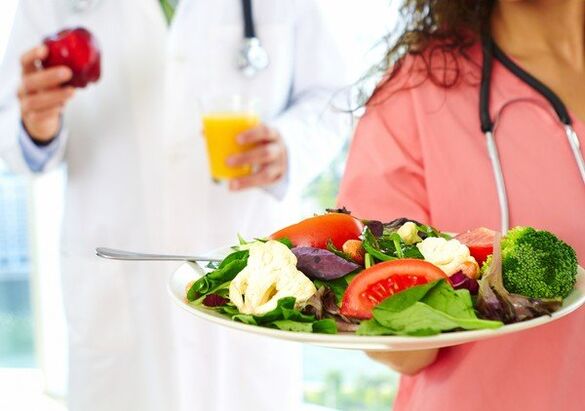
There is a common set of rules for patients with this disorder and it is important to monitor your diet:
- Eat food in small portions several times a day at short intervals (5-6 times). Hunger causes an increase in acetone in the urine. And this can increase the course of the disease.
- Chew food carefully, do not overeat.
- Limit the amount of table salt used in the preparation of dishes (up to 5 grams per day). Salt has the property of retaining fluid in tissues, which in turn leads to the precipitation of uric acid salts.
- Optimized body fluid balance. To do this, it is recommended to drink it at least 2 liters a day.
- Arrange fasting days. Preferably vegetables, dairy products and fruits (excluding those that are forbidden for consumption).
- Stick to long-term restrictions, as short-term use of treatment is ineffective.
People suffering from severe metabolic disorders and with a history of diabetes and gout need to rule out dishes that cause jumps in uric acid and insulin levels in the blood. Diuretics for gout and diabetes are designed to reduce these signs, in order to prevent exacerbations and complications.
How to prepare food properly?
Restricting the grocery list is not the only thing that needs to be monitored. It is important to choose the right cooking method when preparing your meals.
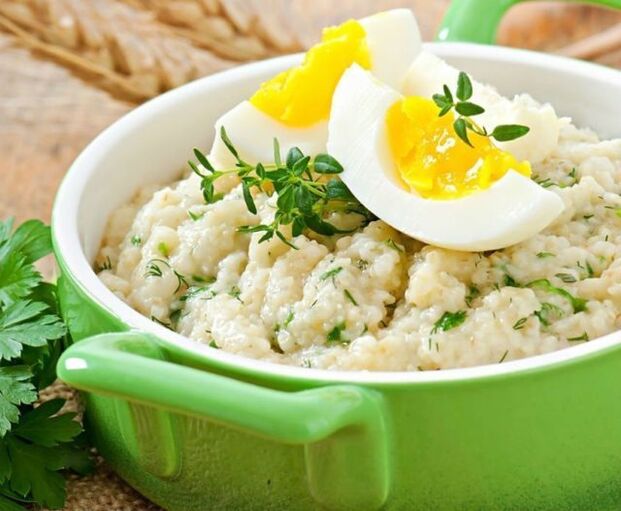
No special requirements are made for the production of products, with the exception of meat processing.
Cooking is allowed as follows:
- for couples;
- Baka;
- fire extinguishers;
- boiling;
- slow.
Do not indicate cooking with:
- fry;
- smoking;
- salting and pickling;
- fermentation.
Do not use old, burnt food. The temperature of the food consumed should be optimal for the food and not exceed the temperature of 40 degrees Celsius. Food should not be coarse and hard. If necessary, individual dishes can be chopped with a mixer.
Effective diet: menu for each day
Medical nutrition in terms of the content of important elements (protein-carbohydrate-fat balance), calories, vitamins, micronutrients, amino acids should correspond to the physiological needs of patients.
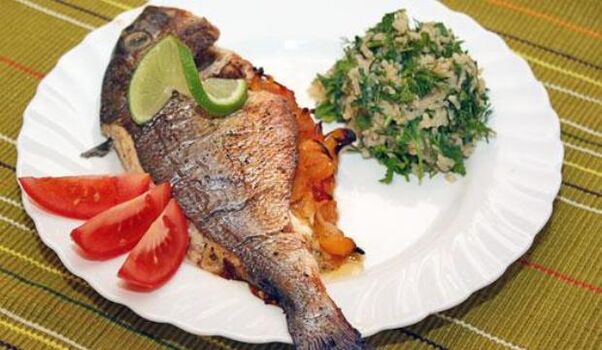
Estimated diet for gout and high uric acid:
1 day
First breakfast: boiled cod, mashed potatoes, black bread, white cabbage salad, seasoned with sour cream, a cup of weak coffee with saccharin.
Other breakfast: cottage cheese, boiled eggs, breadcrumbs, tea.
For lunch: vegetable soup with fried roots and potatoes, beef tenderloin, buckwheat porridge, fresh cucumber, 1 apple.
Dinner: carrot chops, pasta, milk, biscuits.
In the evening: 200 ml of kefir.
Day 2
First breakfast: boiled white cabbage, 1 boiled egg, black bread, cappuccino.
Other breakfast: cappuccino, biscuits.
For lunch: lean borscht, crispbread, baked poultry fillet, boiled rice, fruit jelly.
For dinner: stewed potatoes with vegetables, vegetable stews, bran bread with butter, a glass of broth.
In the evening: 250 ml of cheese soft.

Day 3
First breakfast: vegetable salad (white cabbage, carrots, apples), weak coffee.
Other breakfast: cottage cheese with sour cream, rose meat broth.
For lunch: barley soup with sour cream, steamed cutlet, mashed potatoes, berry jelly, wholemeal bread.
For dinner: carrot cutlets with fruit, crumbs, milk glass.
Before bed: steamed prunes.
Day 4
First breakfast: grated carrots with sour cream, porridge, a glass of green tea.
Other breakfast: dried fruit slices, compote, biscuits.
For lunch: Milk noodles, boiled chicken with baked pumpkin and potatoes, fruit jelly, black bread.
For dinner: baked cheesecakes in the oven, carrot and apple chops, a glass of tea with lemon.
At night: 200 ml of hot milk.
Day 5
First breakfast: porridge cooked in buckwheat, green tea.
Another breakfast: a glass of fresh carrot.
For lunch: vegetable rice soup with sour cream, boiled beef pulp, beetroot caviar, basil infusion with honey, black bread.
For dinner: pumpkin stew with sour cream, a glass of weak tea, biscuits.
Before bed: rose bread with honey.
6 days
First breakfast: chicken protein egg, beetroot, white bread, a glass of weak coffee.
Other breakfast: zucchini stew, fruit and berry mat.
Lunch: vegetable barley soup, boiled potatoes, boiled meatballs, jelly, black bread.
Dinner: rice boiled in milk, sick tea drink.
Before going to bed: a glass of yogurt.
A standard nutrition plan is prepared by a doctor. The possibilities for integration of permitted meals in the diet are varied. Diet number 6 is common for gout. Its main principle is to exclude foods and dishes with high purine content, add alkaline drinks to the diet and careful processing during cooking. An independently composed menu with a limitation on the amount and nature of food can lead to a prolonged course of the disease.














































































